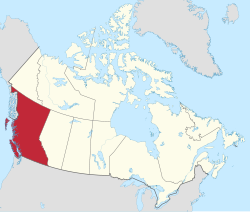
The following is an alphabetical list of articles related to the Canadian province of British Columbia.

The following is an alphabetical list of articles related to the Canadian province of British Columbia.
| | This section is empty. You can help by adding to it. (July 2010) |